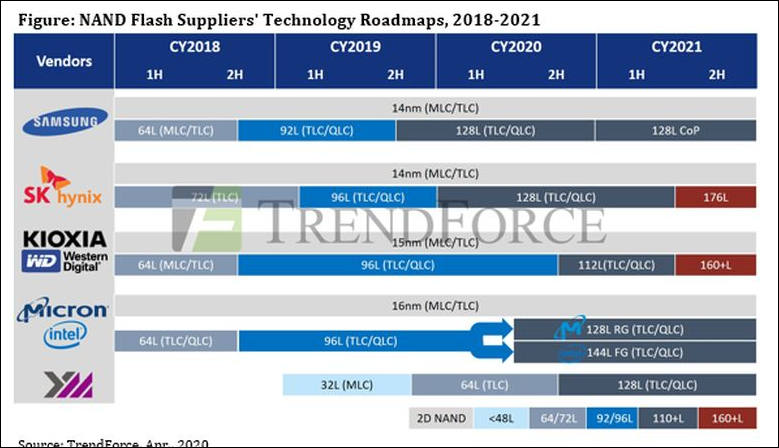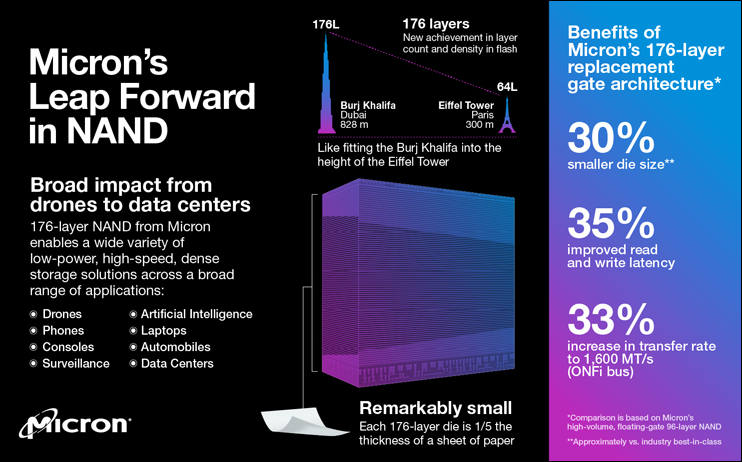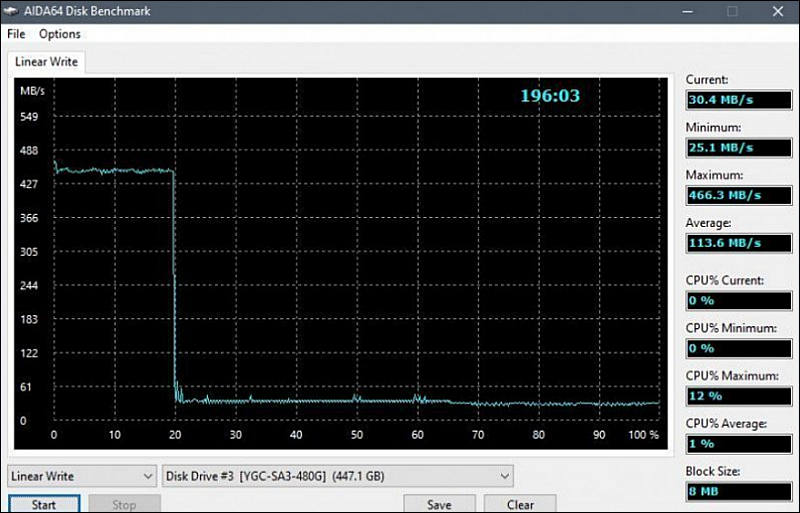
-
Attemps to improve error correction for QLC
China's main control technology provider Maxio Tech recently announced the successful development of the 4K LDPC algorithm. This is the first time that domestic SSD control chip manufacturers have achieved continuous breakthroughs in this technology, which will greatly improve the reliability and service life of QLC flash memory.
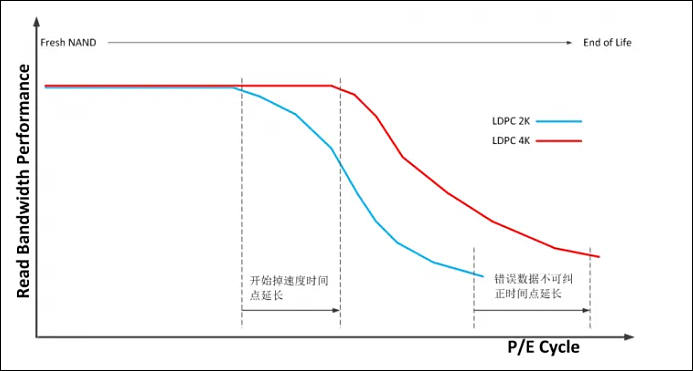

 sa12750.jpg693 x 371 - 26K
sa12750.jpg693 x 371 - 26K -
So, last night I decided to move some files to my M.2 NVMe QLC drive. I was using it for video caching, so smallish files in general. All was good. I was moving massive 4K DNx files. About 300GB. First few seconds 1400MB/s. "Pretty nice for a cheap drive!". Less than 40 seconds later 185MB/s "Ah, what a pain, but still faster than my magnetic drive". A while later I come back speed about 38MB/s. "OK, this is not OK, this is shit"... ... .... A while later I come back 14MB/s "WTF, that is literallly 1% of the initial speed!". I left and went to sleep at that point, but unless something changes massively, that is the last QLC drive I buy. Not that I was not warned, but yeah, the drive is only good for small files, that's a fact.
-
Do not worry, companies plan to already have around 60-70% QLC only consumer drives this fall.
This time it will be silent move, no fanfares.
Same as with MLC before it 3D TLC will remain in premium drives during 2021 and especially 2020.
-
8TB QLC NVMe drive (expected sustained write speed 40-80Mb.sec)
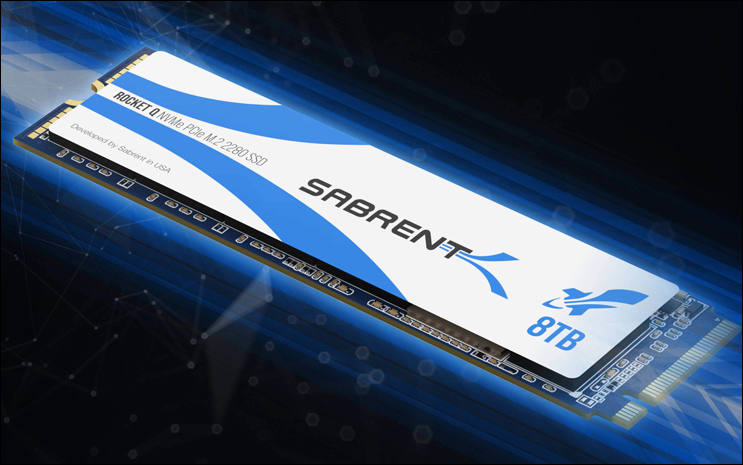
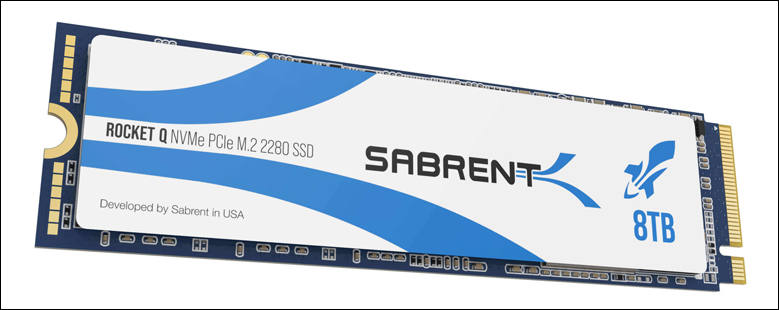

 sa13148.jpg743 x 465 - 51K
sa13148.jpg743 x 465 - 51K
 sa13149.jpg779 x 310 - 37K
sa13149.jpg779 x 310 - 37K -
Bad news coming
The adoption of QLC (4bits/cell) NAND memory is set to grow rapidly starting the second half of 2020, thanks to rising demand for data-intensive applications demanding large-capacity, efficient and cost-effective storage, according to industry source.
-
HDDs are actually faster at linear write speeds than most consumer QLC drives (if you measure areas out of SLC cache).
-
Dangerous signs from Intel
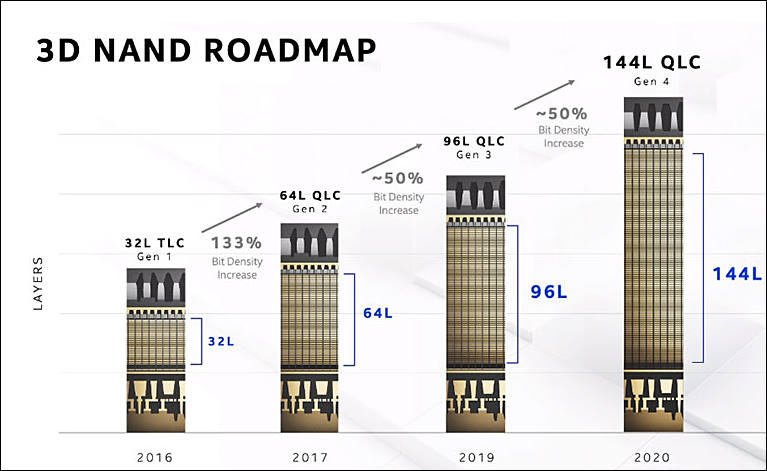
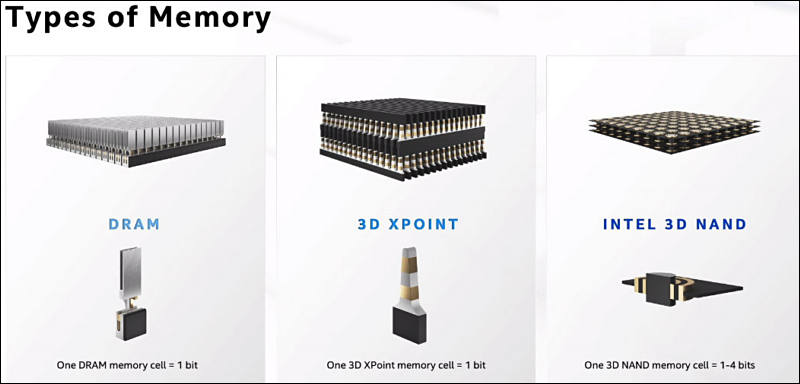
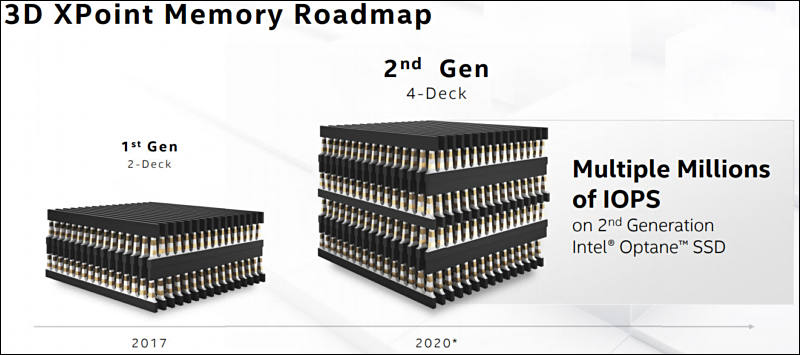

 sa14086.jpg767 x 471 - 55K
sa14086.jpg767 x 471 - 55K
 sa14087.jpg800 x 384 - 34K
sa14087.jpg800 x 384 - 34K
 sa14088.jpg800 x 355 - 47K
sa14088.jpg800 x 355 - 47K -
QLC comes
Major chipmakers are ramping up their quad-level cell (QLC) NAND flash output, SSDs utilizing the technology storing four bits per cell have become commercially available and are set to soon penetrate at a faster pace into the markets for both enterprise- and consumer-class storage devices, according to industry sources.
The adoption of QLC NAND-based SSDs has been rising for datacenter and other enterprise-class storage applications since 2020, the sources said. QLC SSDs are more demanded for high-capacity and lower-cost SATA storage devices, in particular.
Phison offers its new S12DC controller for a 15.36TB QLC-based enterprise SATA SSD, with sample deliveries already kicking off. In a statement issued by Phison, market research firm TrendFocus indicated "the enterprise SSD market will maintain greater than 10 million units per year for a number of years out. Enterprise and datacenter customers looking for high capacity, lower cost SATA storage solutions will have a very viable option with this high capacity QLC-based solution."
QLC helps drive a more approachable price point, narrowing the affordability gap between HDDs and solid state storage, noted Micron, which claimed the company is the first to make QLC technology available in an enterprise-class SSD.
-
Xbox and Playstation will use only QLC memory
Main idea of Microsoft and Sony is that by having special protected SSD drives that you can't replace they could limit effective life of game consoles. QLC is known for quick degradation even in case if you do not write too much in the NAND chips.
-
WD seriously think about using HDD for SSD caching
WD will work on special software driver to cache large amount of sustainable writing for QLC and PLC disks as they will fully replace TLC in consumer devices during 2021.
After dynamic SLC cache of SSD disk will be full, driver will be able to use other SSD and even HDD to cache writes (content will be written in the hidden files) and will later slowly move data to target SSD drive.
QLC sustainable write speed is normally in 14-60Mb/sec and PLC speeds are expected to be in the range of 4-2-Mb/sec. So, using HDD becomes reasonable.
-
1TB QLC writing speed chart if disk is free, but not trimmed and zero filled
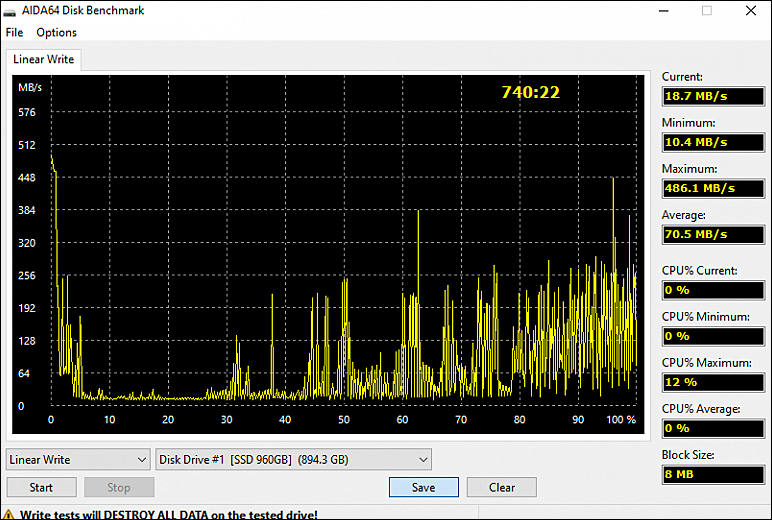
Horror.

 sa15310.jpg772 x 520 - 101K
sa15310.jpg772 x 520 - 101K -
Micron Technology has begun volume shipments of what the company claims is the world's first 176-layer 3D NAND flash memory.
Micron indicated its new 176-layer technology and advanced architecture represent a radical breakthrough enabling immense gains in application performance across a range of storage use cases spanning data center, intelligent edge and mobile devices.
"Micron's 176-layer NAND sets a new bar for the industry, with a layer count that is almost 40% higher than our nearest competitor's," said Scott DeBoer, executive VP of technology and products at Micron. "Combined with Micron's CMOS-under-array architecture, this technology sustains Micron's industry cost leadership."
Adding more layers is the only improvements vector for now.
-
Hynix also present 176-layer tech
SK Hynix has developed what the company claims is the industry's most multilayered 176-layer 512Gb triple-level cell (TLC) 4D NAND flash, and started delivering the chip samples to controller companies recently.
SK Hynix noted it has been promoting 4D technology from the 96-layer NAND flash products that combine the company's in-house developed charge trap flash (CTF) with high-integrated peri under cell (PUC) technology. The new 176-layer NAND flash is the company's third-generation 4D product, which delivers a 35% improvement in bit productivity when compared to the previous generation. The read speed of cell increased by 20% over the previous generation adopting 2-division cell array selection technology, while the data transfer speed has been improved by 33% to 1.6Gbps adopting speed-up technology without increasing the number of processes.
Starting with mobile solution products that have improved maximum read speed by 70% and maximum write speed by 35% in mid 2021, SK Hynix plans to release consumer and enterprise SSDs sequentially expanding its application market of the products.
SK Hynix also has plans to develop one terabit (Tb) products with doubled density based on 176-layer 4D NAND.
-
More recent Intel QLC state
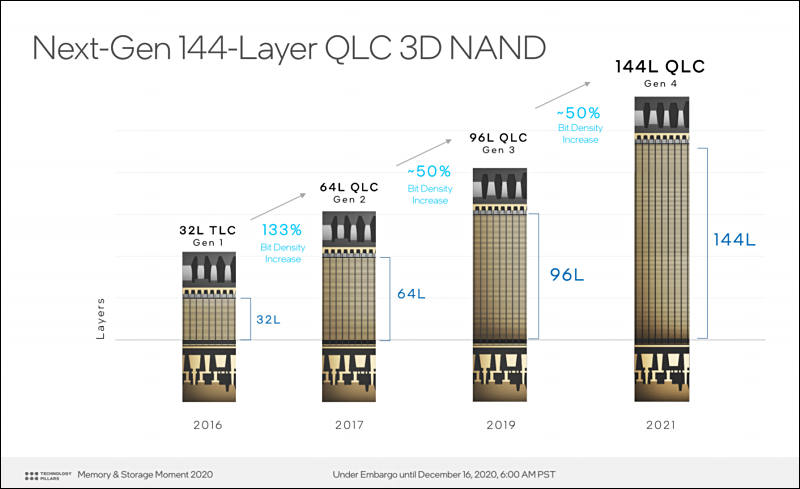
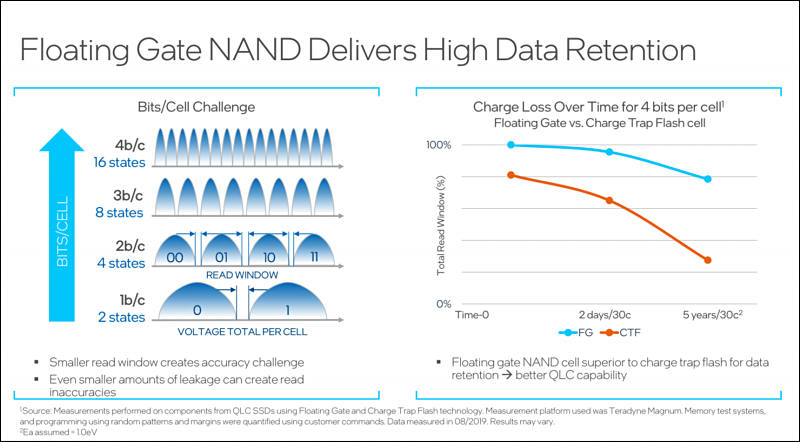

 sa17834.jpg800 x 489 - 47K
sa17834.jpg800 x 489 - 47K
 sa17835.jpg800 x 442 - 61K
sa17835.jpg800 x 442 - 61K -
During the event dedicated to Samsung's Q2 financial results, company representatives talked about their progress on 200-layer V-NAND flash memory chips. These will be the first chips of this kind in the entire industry.
Han Jin-man, senior vice president and curator of Samsung's memory division, said that the company has already developed 200-layer (and this number may still grow) eighth generation V-NAND memory chips, which are currently being prepared. launch of a production line to bring them to the market. “176-layer chips will remain the mainstream NAND product until 2022. And, according to the approved 10-year plan, we are working on the next generation V-NAND chip. "
Progress is slowing down as lot of layers is also not good and very prone to errors.
-
Major NAND flash chip suppliers are poised to ramp up their output for QLC (quad-level cell) NAND chips between the end of this year and 2022, eyeing robust demand for not only PCs but also datacenter applications
-
Apple is working with multiple NAND flash chipmakers to develop cost-effective QLC (quad-level cell) NAND flash solutions, and could adopt the memory in its iPhone series as early as 2022.
It will be very sad day. Especially for video guys.
-
Micron announced the start of shipments of 232-layer 3D NAND TLC flash memory chips, which have the highest density on the market - the volume of a single chip can reach 1 Tbit. In addition to significantly increased density, the new 232-layer 3D NAND TLC flash chips offer up to two times faster write speeds and up to 75% faster read speeds than previous generation chips.
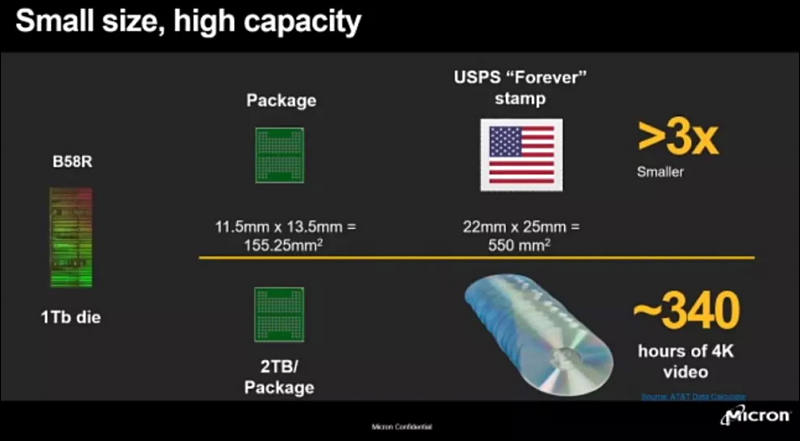
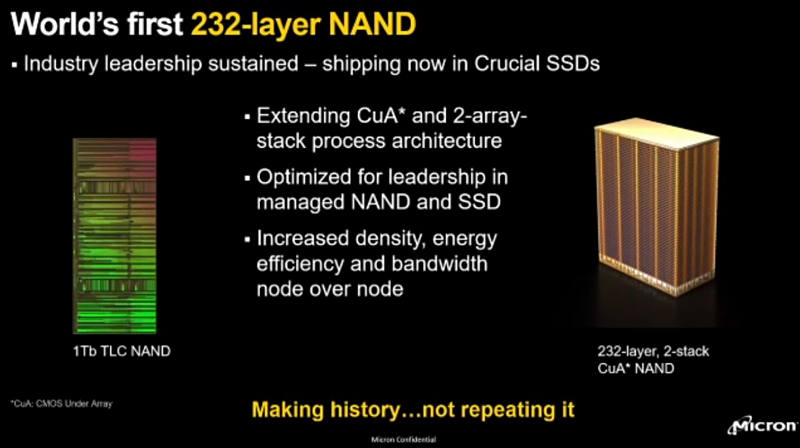
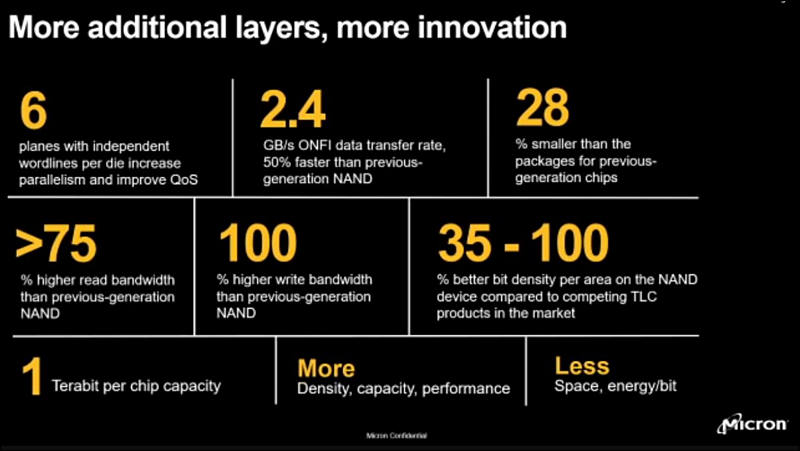
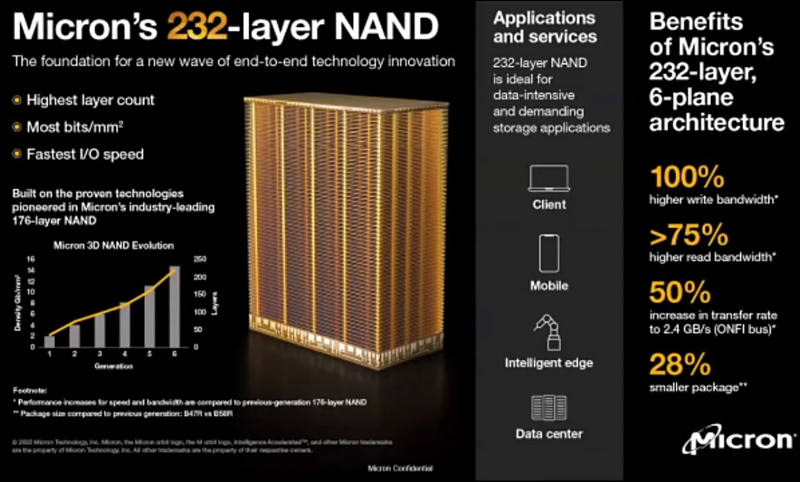

 sa7193.jpg800 x 441 - 34K
sa7193.jpg800 x 441 - 34K
 sa7194.jpg800 x 448 - 46K
sa7194.jpg800 x 448 - 46K
 sa7195.jpg800 x 451 - 50K
sa7195.jpg800 x 451 - 50K
 sa7196.jpg800 x 482 - 63K
sa7196.jpg800 x 482 - 63K
Howdy, Stranger!
It looks like you're new here. If you want to get involved, click one of these buttons!
Categories
- Topics List23,992
- Blog5,725
- General and News1,354
- Hacks and Patches1,153
- ↳ Top Settings33
- ↳ Beginners256
- ↳ Archives402
- ↳ Hacks News and Development56
- Cameras2,367
- ↳ Panasonic995
- ↳ Canon118
- ↳ Sony156
- ↳ Nikon96
- ↳ Pentax and Samsung70
- ↳ Olympus and Fujifilm101
- ↳ Compacts and Camcorders300
- ↳ Smartphones for video97
- ↳ Pro Video Cameras191
- ↳ BlackMagic and other raw cameras116
- Skill1,960
- ↳ Business and distribution66
- ↳ Preparation, scripts and legal38
- ↳ Art149
- ↳ Import, Convert, Exporting291
- ↳ Editors191
- ↳ Effects and stunts115
- ↳ Color grading197
- ↳ Sound and Music280
- ↳ Lighting96
- ↳ Software and storage tips266
- Gear5,420
- ↳ Filters, Adapters, Matte boxes344
- ↳ Lenses1,582
- ↳ Follow focus and gears93
- ↳ Sound499
- ↳ Lighting gear314
- ↳ Camera movement230
- ↳ Gimbals and copters302
- ↳ Rigs and related stuff273
- ↳ Power solutions83
- ↳ Monitors and viewfinders340
- ↳ Tripods and fluid heads139
- ↳ Storage286
- ↳ Computers and studio gear560
- ↳ VR and 3D248
- Showcase1,859
- Marketplace2,834
- Offtopic1,320
Tags in Topic
- ssd 15


